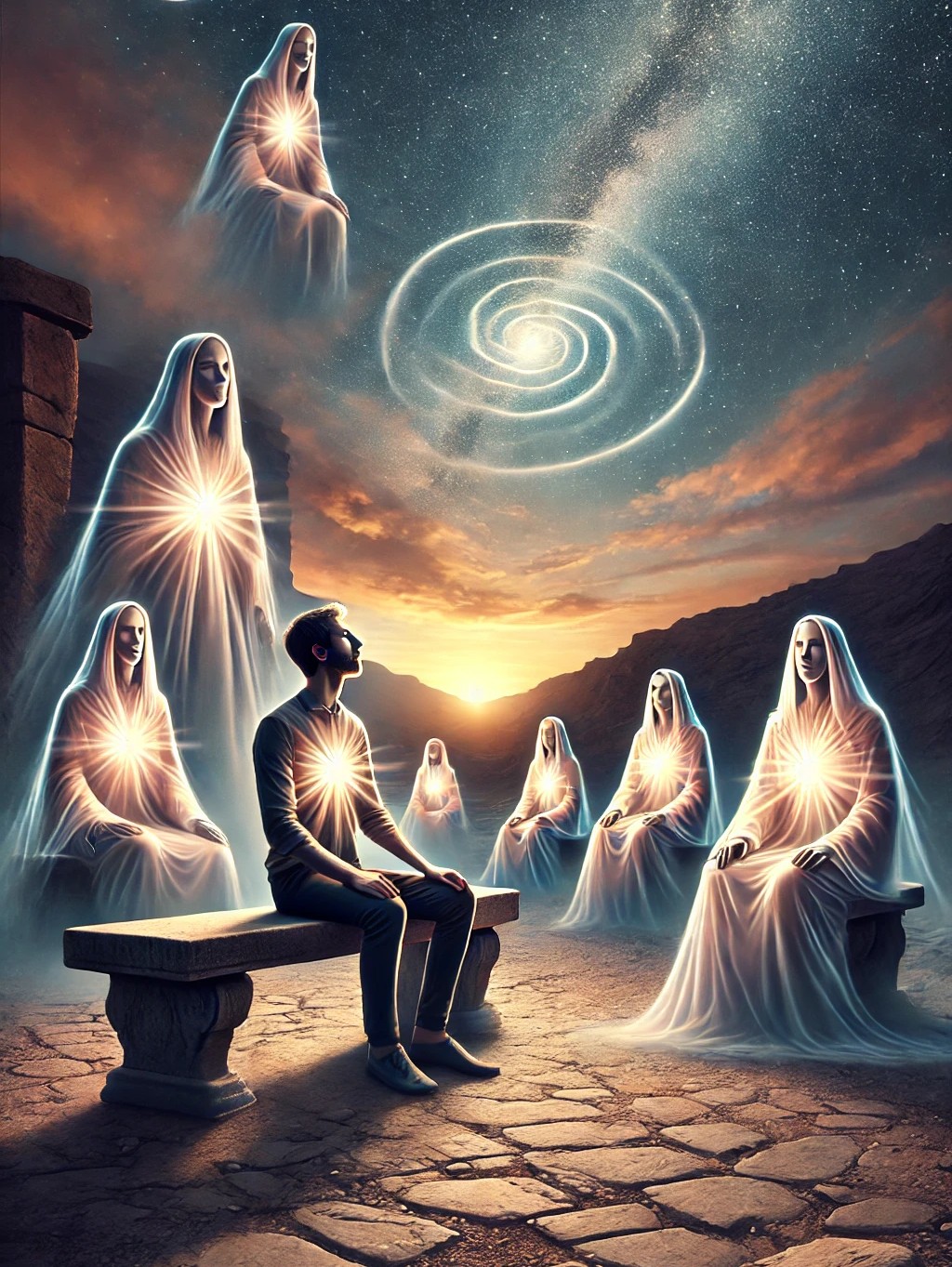From Play to Prayer: Redefining Temple Nights with Intention and Integrity
Written by Frank Mondeose on November 21, 2024
Temple Culture has long been a space for exploration, connection, and transformation, offering individuals the opportunity to engage with sacred sexuality, eros, and community in profound ways. As Temple Culture continues to evolve, it is our collective responsibility to ensure that these gatherings, particularly Temple Nights, remain rooted in their original intention: to serve as sacred, prayerful experiences that harness eros as a powerful channel for manifestation and divine connection.
Beyond Play: The Intention of Temple Nights
While play parties have their place in fostering freedom, exploration, and joy, Temple Nights are something different entirely. A play party centers on personal expression, creativity, and consensual exploration, often with an emphasis on physical or sexual engagement. In contrast, a Temple Night is a *prayer in motion*, a collective practice where eros—our life force energy—is intentionally harnessed to create more powerful channels for spiritual alignment and manifestation.
A true Temple Night is not an opportunity for indulgence but an invitation to devotion. It is a space where freedom, love, and acceptance converge to deepen our collective and individual capacity to align with the sacred. By holding eros with reverence and integrating prayerful intention, Temple Nights transcend mere physicality to become a portal for transformation.
Traits of a Temple Initiate
To steward the evolution of Temple Culture, each participant must embody key traits that ensure these sacred gatherings remain intentional, prayerful, and impactful. These traits serve as the foundation for creating a powerful container where personal responsibility and collective synergy meet.
1. Invocation
Every Temple Night begins with an invocation—a sacred calling to align the collective energy with higher intentions. This sets the tone for prayerful engagement and establishes the space as a temple for transformation.
2. Slow – Devotion to the Body Temple
Slowness is a practice of devotion. By honoring the body temple with mindfulness and patience, participants cultivate a deep sense of presence and awareness. This creates a space for authentic connection and heightened sensitivity.
3. Nurture – Care for Others’ States
A true temple initiate nurtures not only themselves but also the collective energy of the space. This means being attuned to the needs and boundaries of others, offering care, and contributing to a harmonious environment.
4. Stimulation – Activation of the Senses
Temple Nights are sensory experiences designed to awaken the body and spirit. Through music, touch, scent, and movement, participants activate their senses, inviting a deeper connection to the present moment.
5. Latihan – Moving in the Mystery
Latihan is a practice of surrendering to the unknown, moving without expectation or agenda. This embodies the essence of prayer in motion, allowing the divine to flow through each participant as they explore the mystery of eros.
6. Leadership – Co-Creation and Involvement
Leadership in a temple context is not about dominance but about co-creation. Every participant is called to take ownership of the experience, contributing their energy, creativity, and intention to the collective.
7. Presence, Patience, and Humility
Being fully present, patient with the process, and humble in the face of the sacred is essential. These qualities allow for deeper attunement to the collective field and the mystery of the divine unfolding.
8. Sovereignty – Personal Responsibility
Each participant must take full responsibility for their actions, energy, and impact. Sovereignty ensures that the space remains safe, consensual, and aligned with the sacred purpose of the gathering.
9. Synergy – Inclusivity, Attunement, and Alignment
Synergy arises from inclusivity and attunement to the collective. When participants align their energies with the shared intention of the temple, a powerful field of co-creation emerges.
10. Sacred – Prayerful Engagement
Above all, Temple Nights are sacred spaces for prayerful engagement. By holding eros with reverence and channeling it into intention and manifestation, participants honor the divine within and around them.
A Call to Responsibility
As Temple Culture evolves, so must our practices. It is no longer enough to gather without intention; we are called to take responsibility for the energy we bring into these spaces and for the collective field we co-create. By embodying the traits of a temple initiate, we ensure that Temple Nights remain spaces of prayer, transformation, and divine alignment.
The invitation is clear: let us move beyond the superficial and embrace the sacred. Let us harness eros not as an end in itself, but as a channel for powerful prayers, manifestations, and the expansion of collective consciousness. Together, we can evolve Temple Culture into a practice that reflects the highest standards of love, freedom, and intentionality.
Let our temples be spaces of profound devotion, where eros becomes the fuel for sacred prayer and the foundation for a transformed world.
***Join us for Living Temple Culture, a transformative retreat from December 5–11, 2024, in Costa Rica, led by Briana Cribeyer, Blake Zealear, and Frank Mondeose. This advanced course is designed to reimagine and elevate Temple Culture with standards of excellence, intentionality, and embodied wisdom. Together, we will explore the sacred principles of eros, prayer, and community through dynamic practices, shadow work, and co-creative rituals, anchoring a new paradigm of integrity and purpose. Step into this sacred container and be part of the evolution of Temple Arts as we align with higher intentions for personal and collective transformation.***
Save the date:
May 12 – 18, 2025
Austin, Texas
Organizer – Julia Vieau
julia@exquisiteintimacy.com






